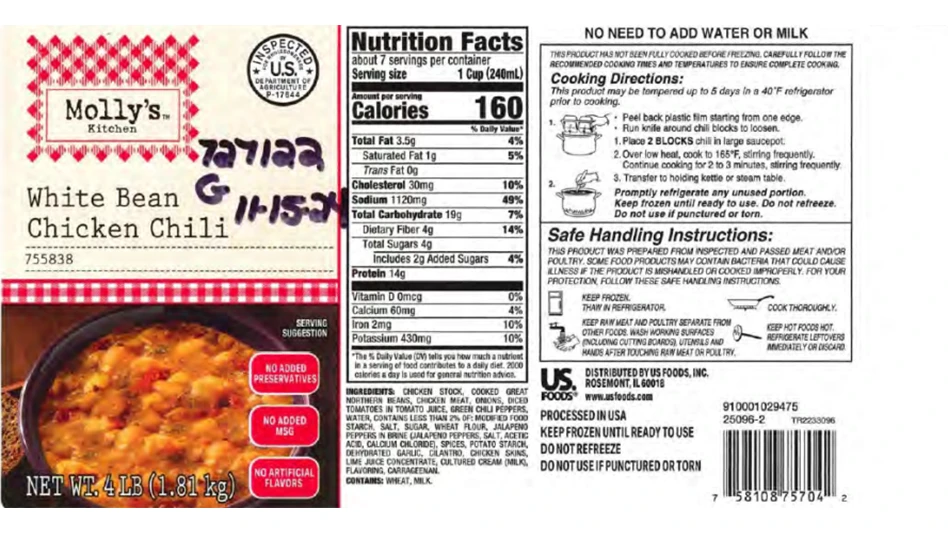“Food plants need to show and document that they are dealing with environmental deficiencies such as sanitation, maintenance, and conducive condition issues,” said Bruce Achterman, In-Quiz-It Software director of marketing and sales. “They are expected to have them and expected to correct them. If they don’t have issues, then in most cases it will raise flags as to why they don’t have them.”
In addition, auditors cannot know all the minute details and processes of every segment of the industry, so they will want to see a paper trail, said Orkin Director of Quality Systems Zia Siddiqi. “You can’t do that in a week and be prepared.”
When Richard Kammerling, president of RK Pest Management Services, conducts plant inspections, he said, “the first place I go are the records. If they are in order and everything is properly documented, you can use them as a guideline.”
Audit-Ready Every Day.
Thus, while it may sometimes seem that an auditor is spending more time inspecting paperwork than inspecting the plant, one need only remember the unseen dangers of the peanut product contamination to understand why inspectors place such importance on the addressing of issues as they occur—and documenting it, rather than attempting last-minute preparation.
In addition, if a plant is not continually audit-ready, it is putting its product, thereby the consumers of that product, at risk. And any such risk is a blight on the entire brand, and industry. “You don’t want to have an incident on the six o’clock news,” Siddiqi said.
On the other hand, achieving high or perfect scores on audits can promote the brand and increase consumer trust. “In the last three years, all of a sudden, this has become very important,” Siddiqi said. “People have become conscious and aware of it.”
“If you read about the issues at Peanut Corp. of America, they took three weeks to clean up before the audits,” Achterman said. “Then it looked like it did before the clean up within a short time after.
“If you’re doing the job the way you should be doing it, then you don’t need to really prepare,” he said, comparing it to readying one’s home for guests. “If you have to scurry to polish it up before guests arrive, then that is acceptable for a house. If you have to clean for three days, that’s seriously letting things go.”
Doing the job the way it should be done, Siddiqi said, involves training of both plant personnel and the pest control operator—whether that be internal or third-party. Siddiqi cited a case where an auditor was checking records at a plant; when he came across the name of the plant’s pest control provider, the auditor asked to see his training and certification records.
Although it is not mandated, similar training requirements should be in place for plant personnel to include education on Integrated Pest Management (IPM), the role each worker plays in its success, and the program as a whole.
“I do think the food processors themselves have to have a role in the pest control program,” said Hank Hirsch, president of RK Environmental Services. “It’s really the one part of the food safety program that gets outsourced, so you need to take a managerial role to make sure it is being conducted.”
Pest Management.
Managing the pest control program is critical because, Kammerling said, “Pest prevention is one of the major building blocks of a food safety program.” In addition, he said, “Sanitation is pest control; without that, you really don’t have a pest program.”
Achterman agreed. “The whole reason plants get pest issues is that they’re not handling sanitation and maintenance issues,” he said.
If prevention, sanitation and exclusion are not maintained, pest problems have more opportunity to develop, Kammerling said. “You need to break the cycle.”
One way to ensure pest management is a regular part of plant processes is to incorporate it into the master cleaning schedule, Hirsch said. “Clearly it is something you cannot let lapse.” Hirsch explained that by making it part of the master cleaning schedule, you will regularly address seemingly minor issues that could lead to increased opportunities for pests. “It is small areas like product spillage that go unresolved that can lead to pest infestation,” he said.
“When it is done on a scheduled basis, it is so great,” Hirsch said. “When you let it lapse, things begin to fall apart.”
Data Analysis.
Although the industry is trending away from pest programs based on simple trap checking, pest control equipment, such as rodent stations and insect light traps, are still essential elements of a complete pest management program, and serve a critical function in monitoring for pest presence. “They work 24/7, and they support the visual inspection,” Kammerling said. “You can’t conduct an inspection effectively without the support of a monitoring system.”
Thus, inspecting of traps can provide a basis for the program. “It will tell you the hot spots and potential hot spots you need to address,” he said, adding, “Then the visual inspection has to take over. You need both. One feeds the other.”
However, he added, any good program goes well beyond simple inspecting of traps and information gathering. “It’s what’s between the traps that really matters,” Kammerling said. “It’s what you do with the information.”
It is that which is “between the traps,” that is, the data gathering that forms the basis for documentation, analysis and corrective action, that are most important in audits and inspections—whether internal, government, customer or third party. “People are so keyed into inspecting the box that they lose sight that the box is representative of the area,” Achterman said.
Thus, rather than simply inspecting a station and checking it off on a list, all documentation of equipment and surrounding area should be entered into an electronic system by which trend analysis can be conducted, he said. “It’s not just a gathering of data,” he explained. “If you’re really looking at the data, you’ll see trends, you’ll see spatial-type graphing.”
Achterman cited the example of a plant which had made a major investment for a contractor to caulk the entire exterior of the building. Yet the plant was still having a mouse problem. When they looked at the data, they saw it trended toward a high percentage of mice in a single area. Upon inspection, there was found to be a large hole under an area of corrugated metal that had been completely missed.
“You don’t see those things, but you see them on graphs,” he said.
“When you really get down to the role of a good pest control operator for food processing, their primary role is to make observations, communicate them, then work toward corrective action,” Hirsch said.
Corrective Action.
It is this corrective action that is not only critical in record-keeping for audits, but in ensuring a food-safe environment in your plant. And while it is the responsibility of a good pest control operator to assist the food plant in detailing the needed action, the plant holds primary accountability for taking action. “The food facility has the responsibility to address whatever corrective action the pest control company is recommending,” Hirsch said.
If the recommendation is documented, as it should be, and the plant has not taken or documented corrective action, he said, “then it will become an audit issue.”
More information on this topic is available at: http://www.qualityassurancemag.com/qa-0311-training-staff-pest-prevention.aspx
The author is Managing Editor of QA magazine. She can be reached at llupo@giemedia.com.

Explore the April 2011 Issue
Check out more from this issue and find your next story to read.
Latest from Quality Assurance & Food Safety
- Boston Sword & Tuna Protects Seafood Safety with Mettler-Toledo Metal Detectors
- IFT Releases New Resources to Aid Food and Beverage Industry in Sugar Reduction
- Yum! Brands CEO David Gibbs to Retire in 2026
- Penn State Extension Offers Short Course on Food Microbiology and Safety for Food Plant Workers
- Johnsonville Recalls Cheddar Bratwurst Due to Possible Plastic Contamination
- Cabot Creamery Butter Recalled Due to Possible Fecal Contamination
- USDA Delays Salmonella Testing Program for Breaded Stuffed Chicken
- FDA Extends Comment Period on Poppy Seeds to June 16





